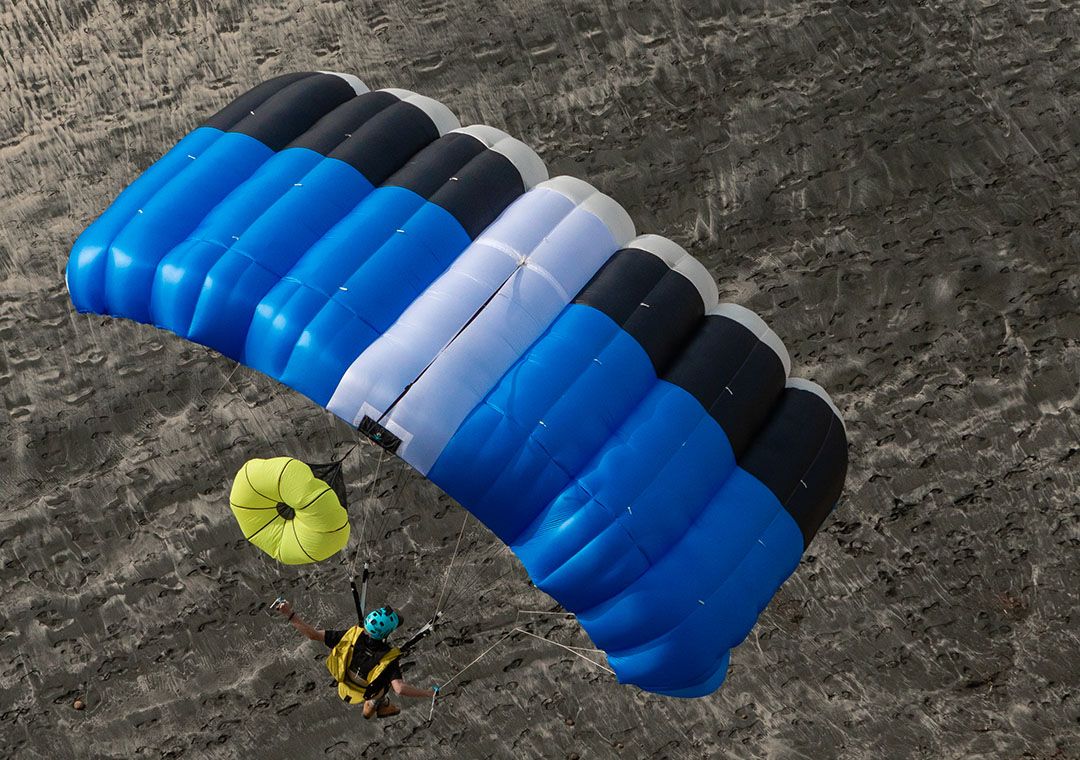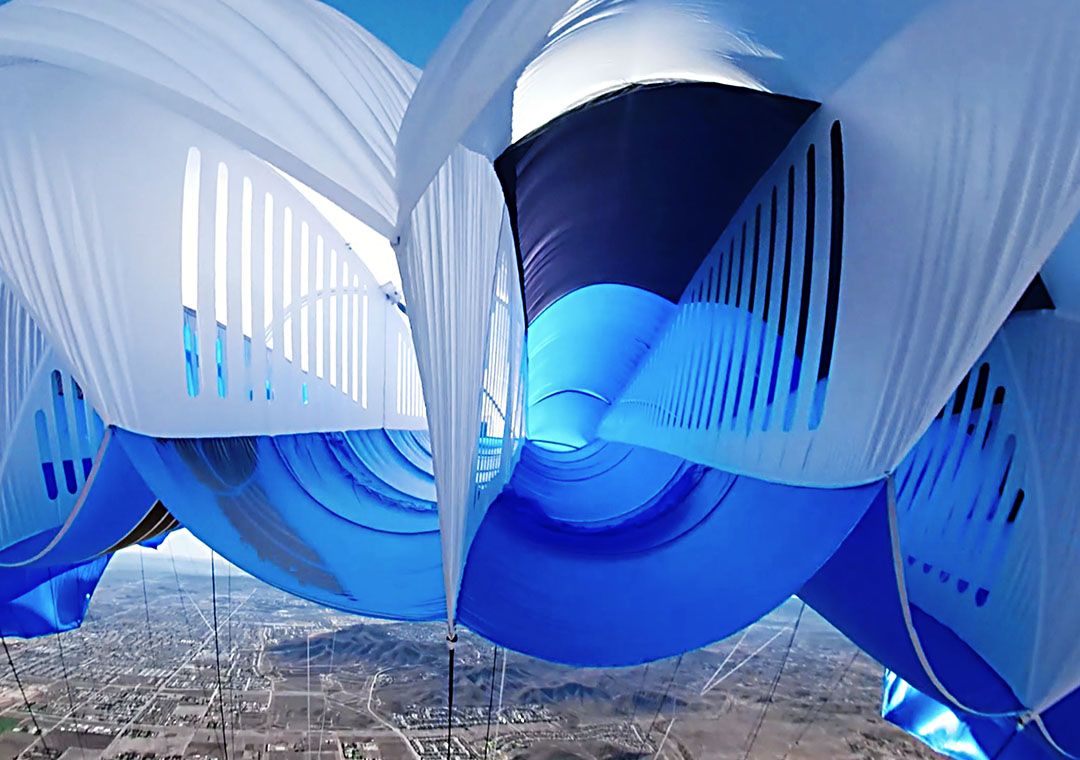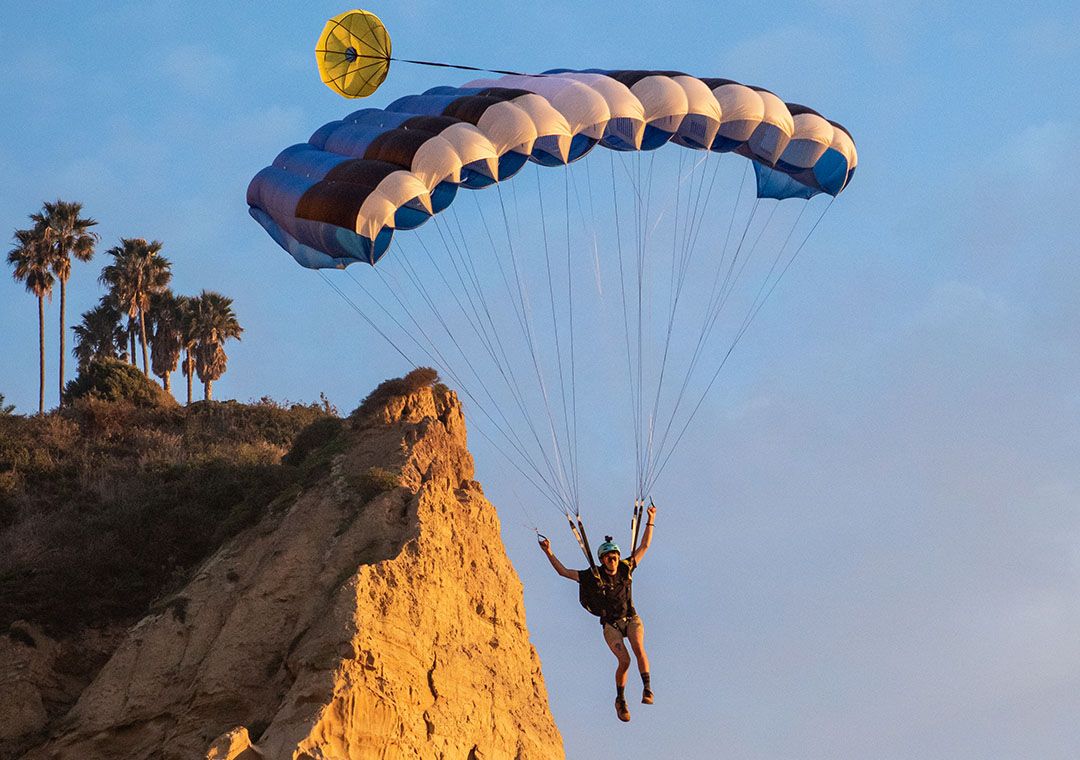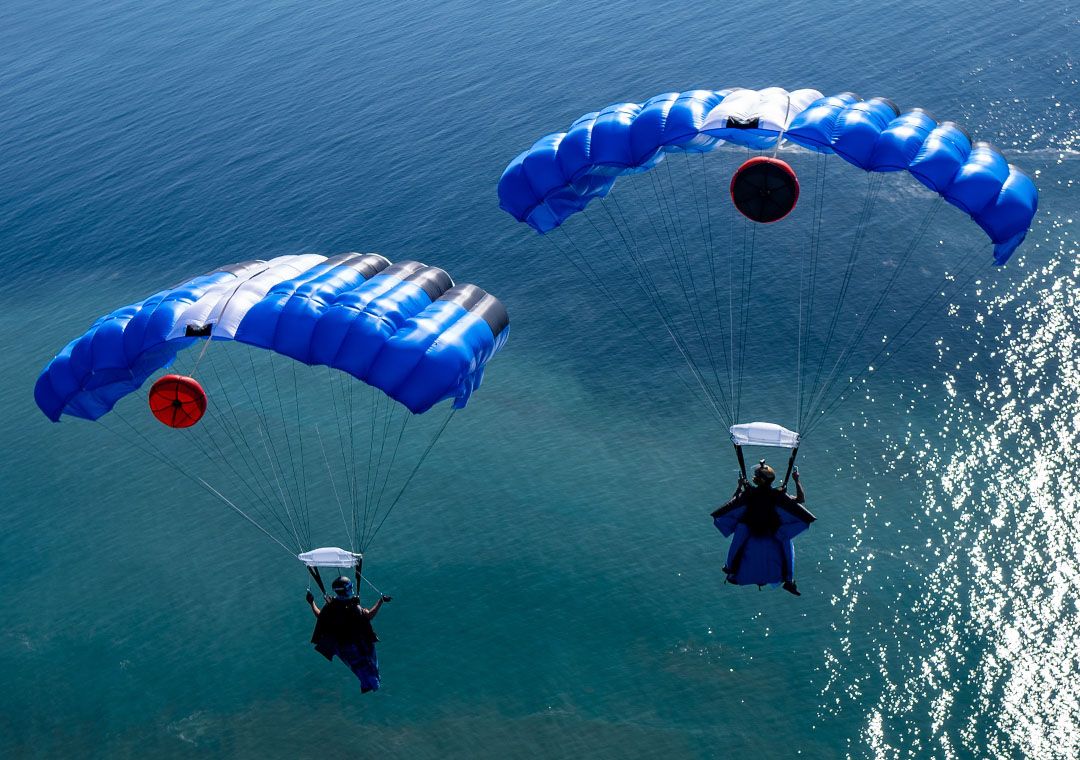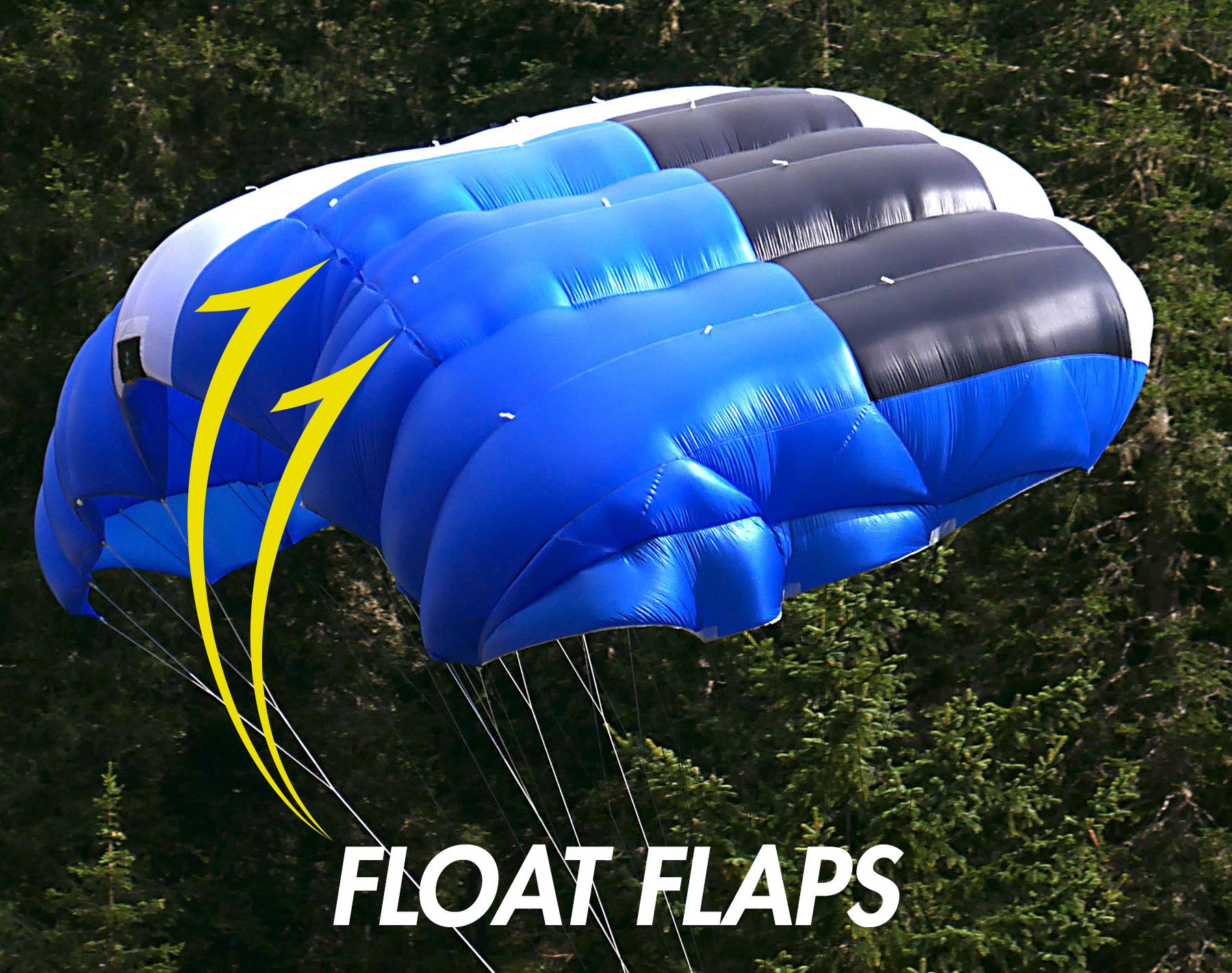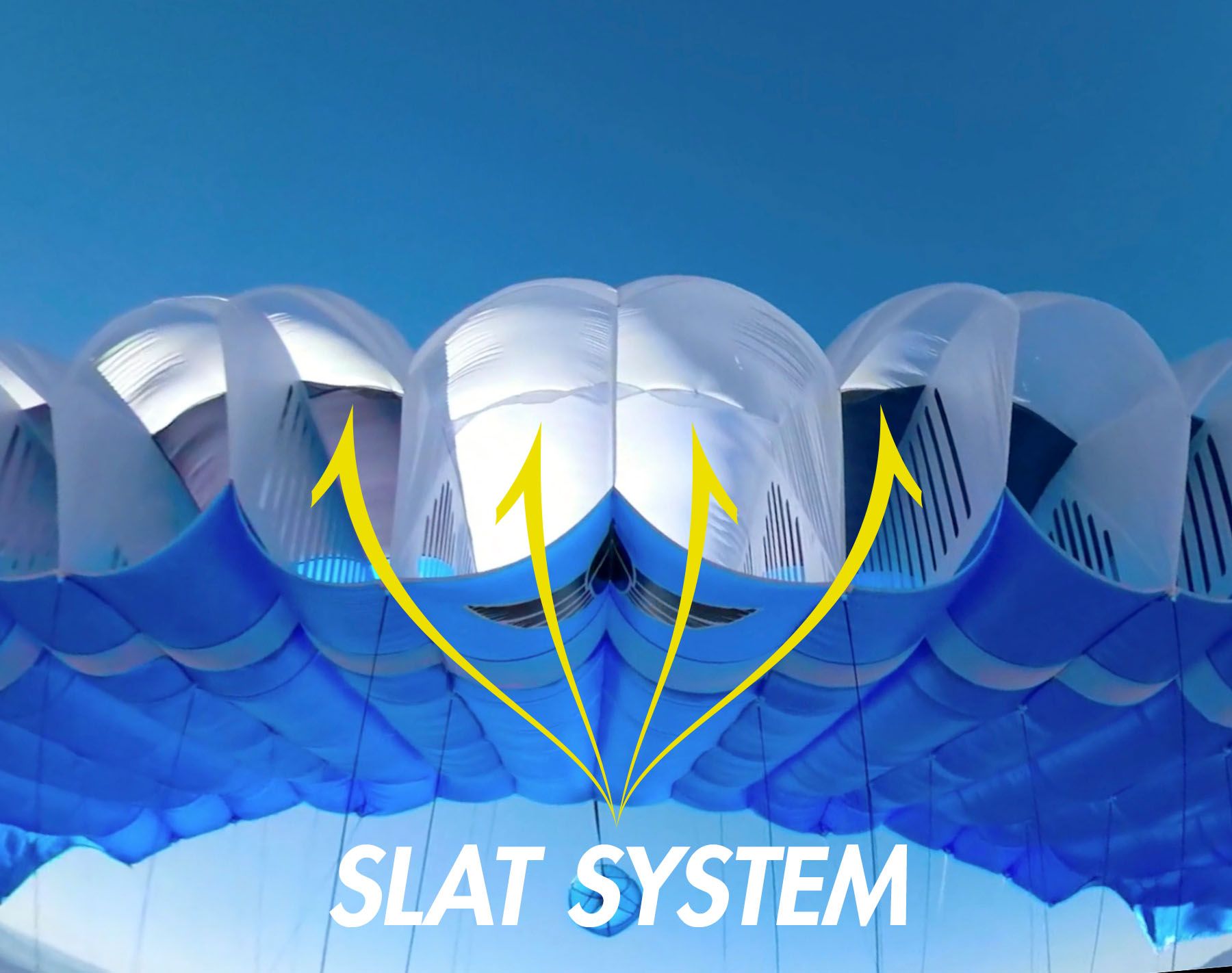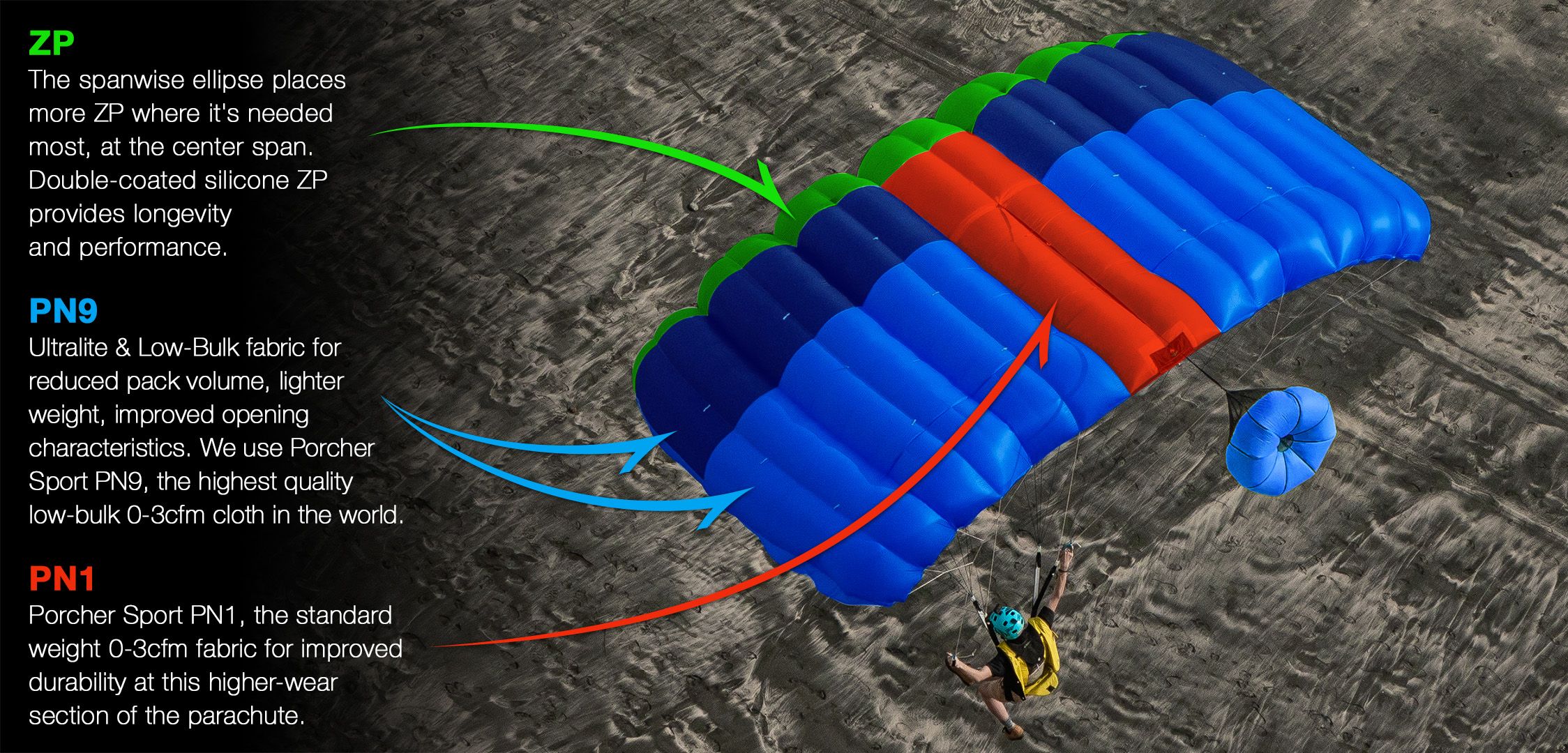- 5 Vents & Float Flap system
- Transversal shaping
- Expanded crossporting
- Six grommet slider
- New unloaded rib profile
- 100% CAD-to-Laser & single layer cutting, like all SQRL canopies
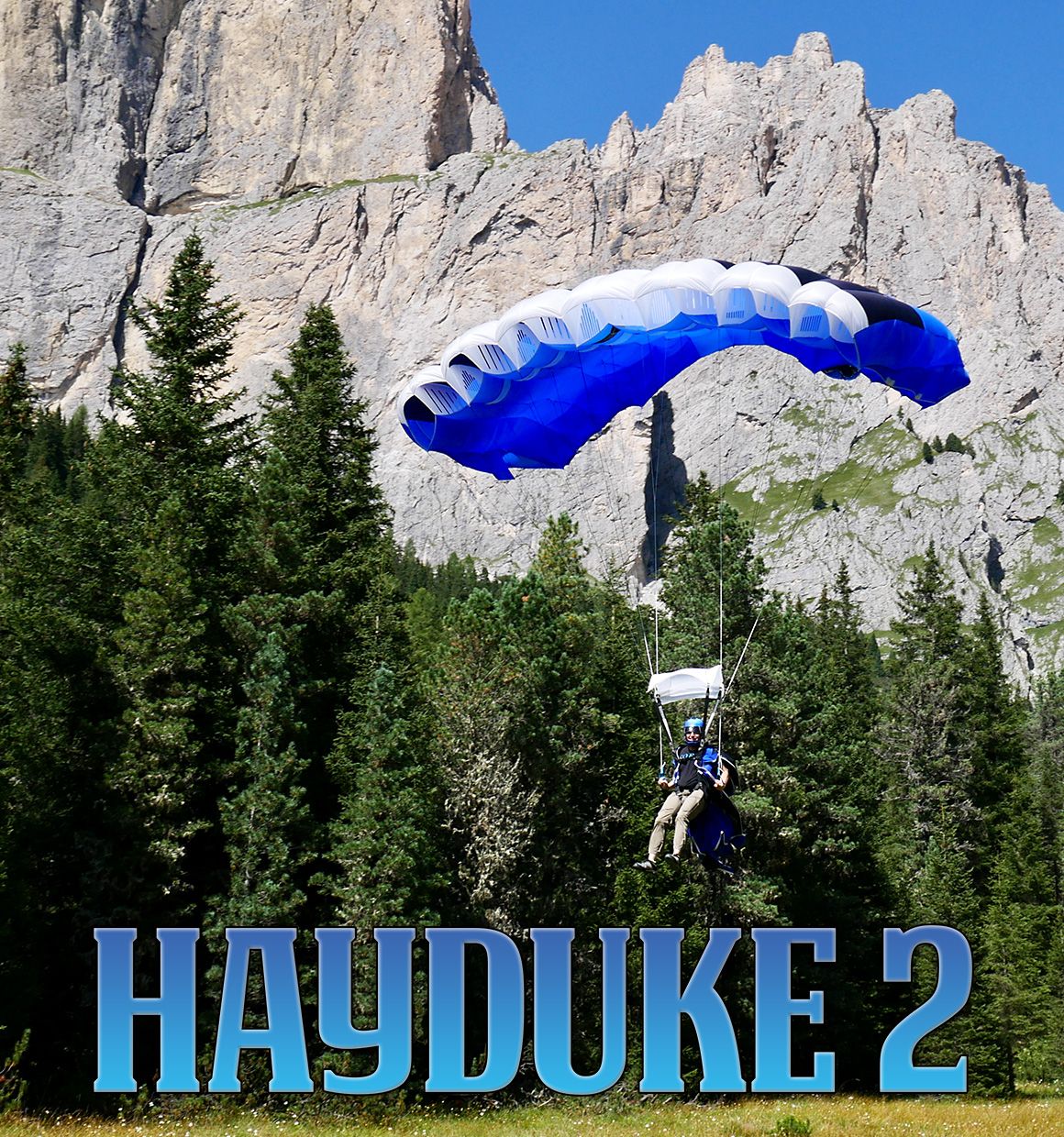
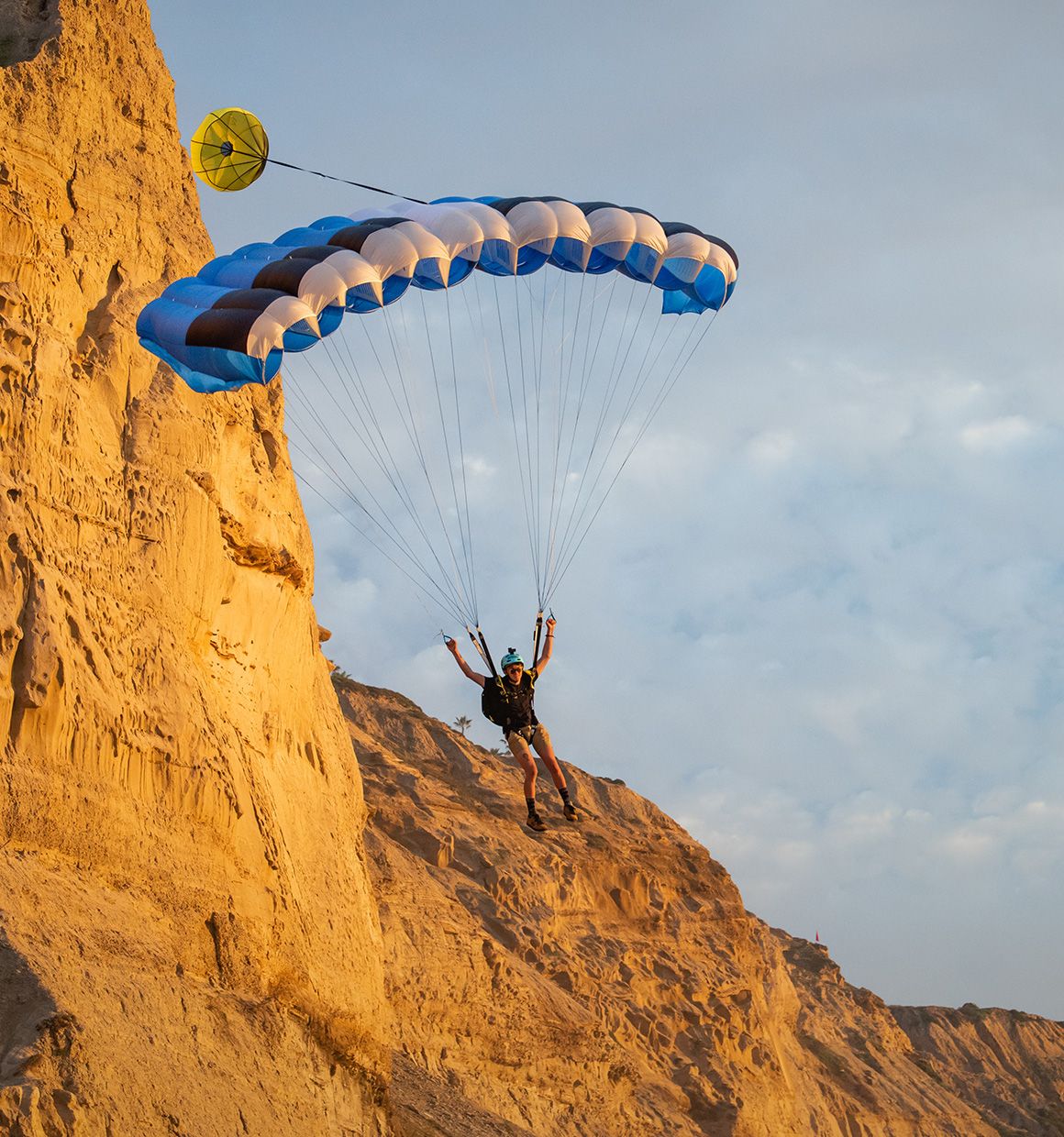
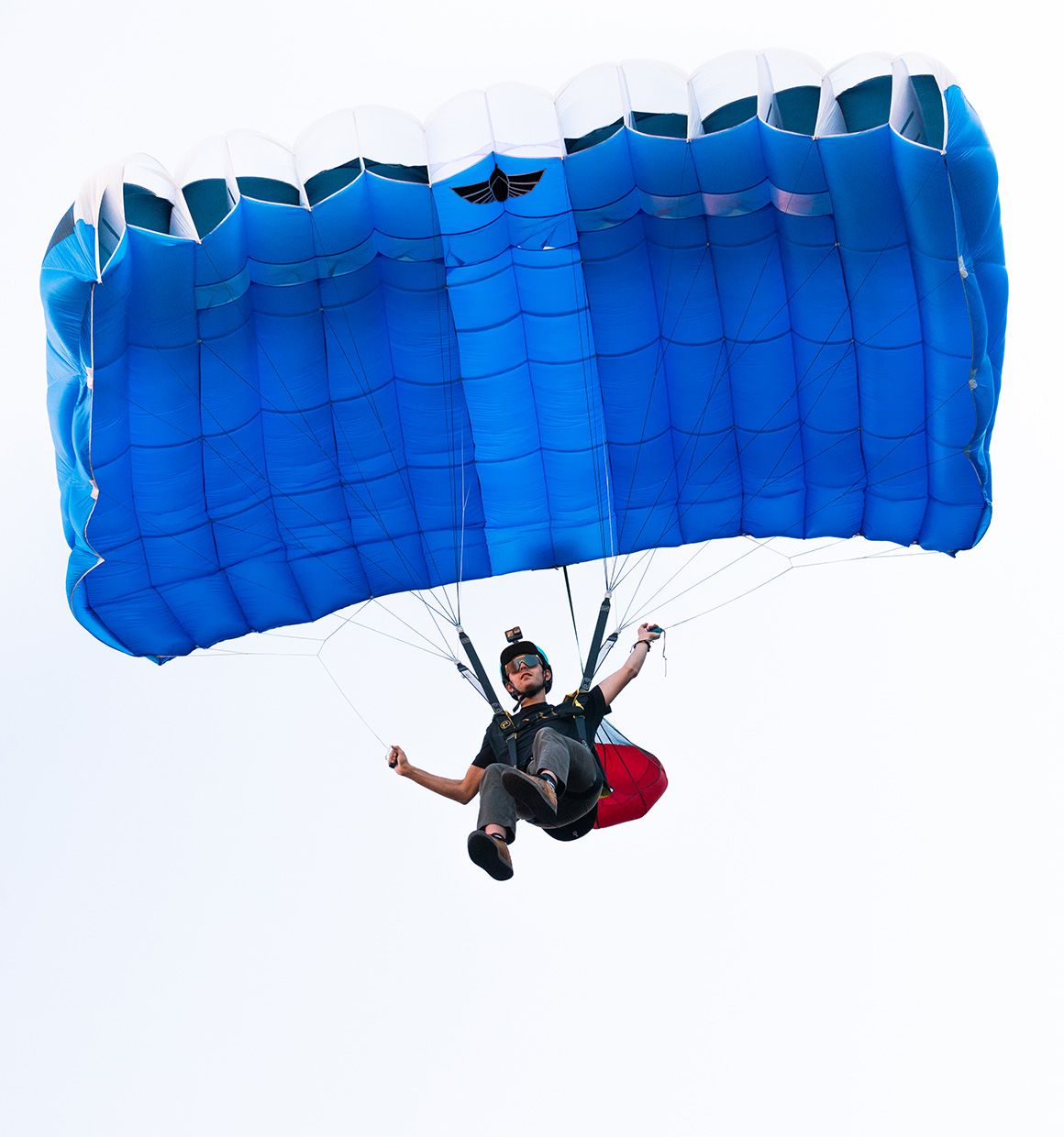
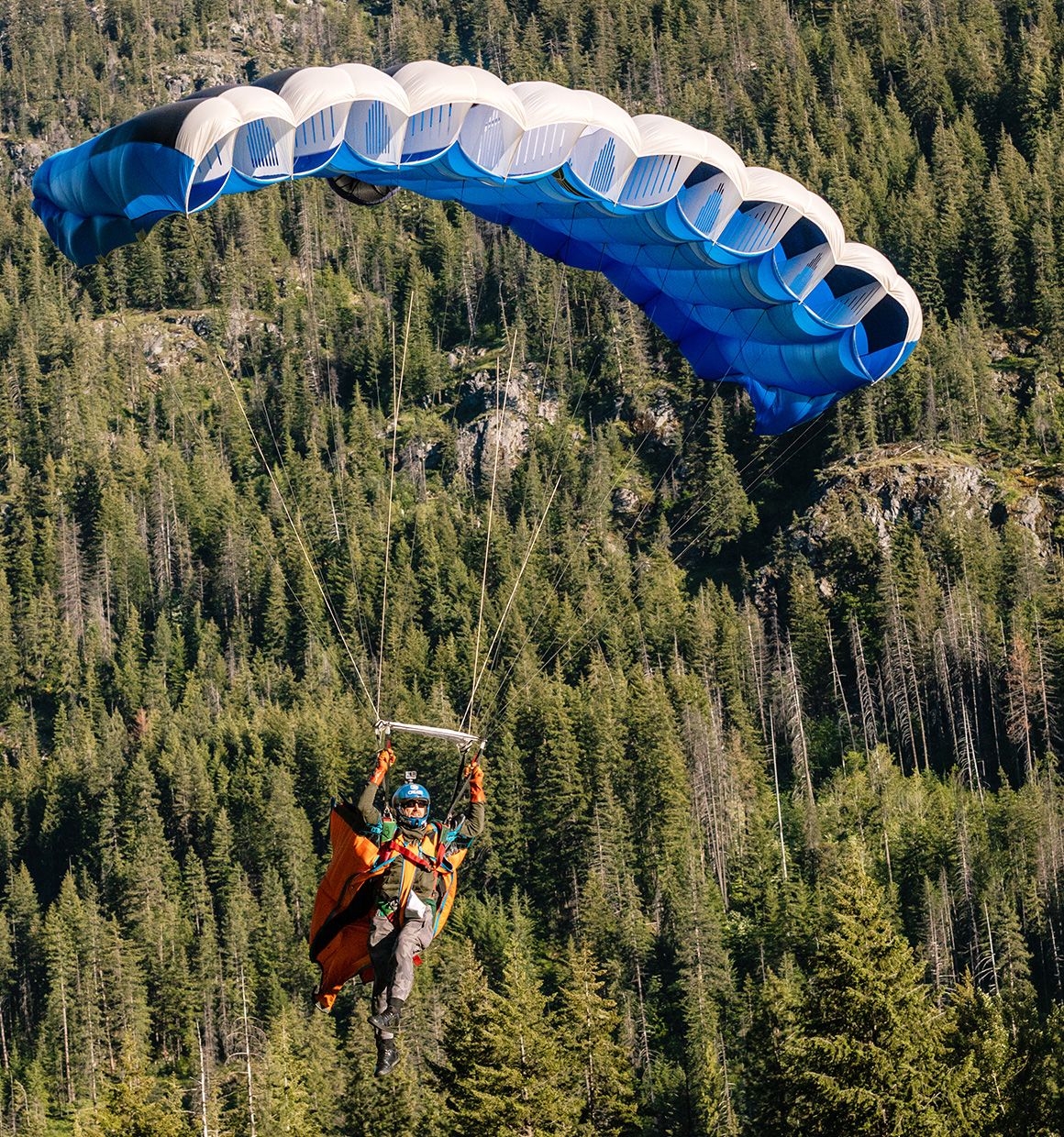
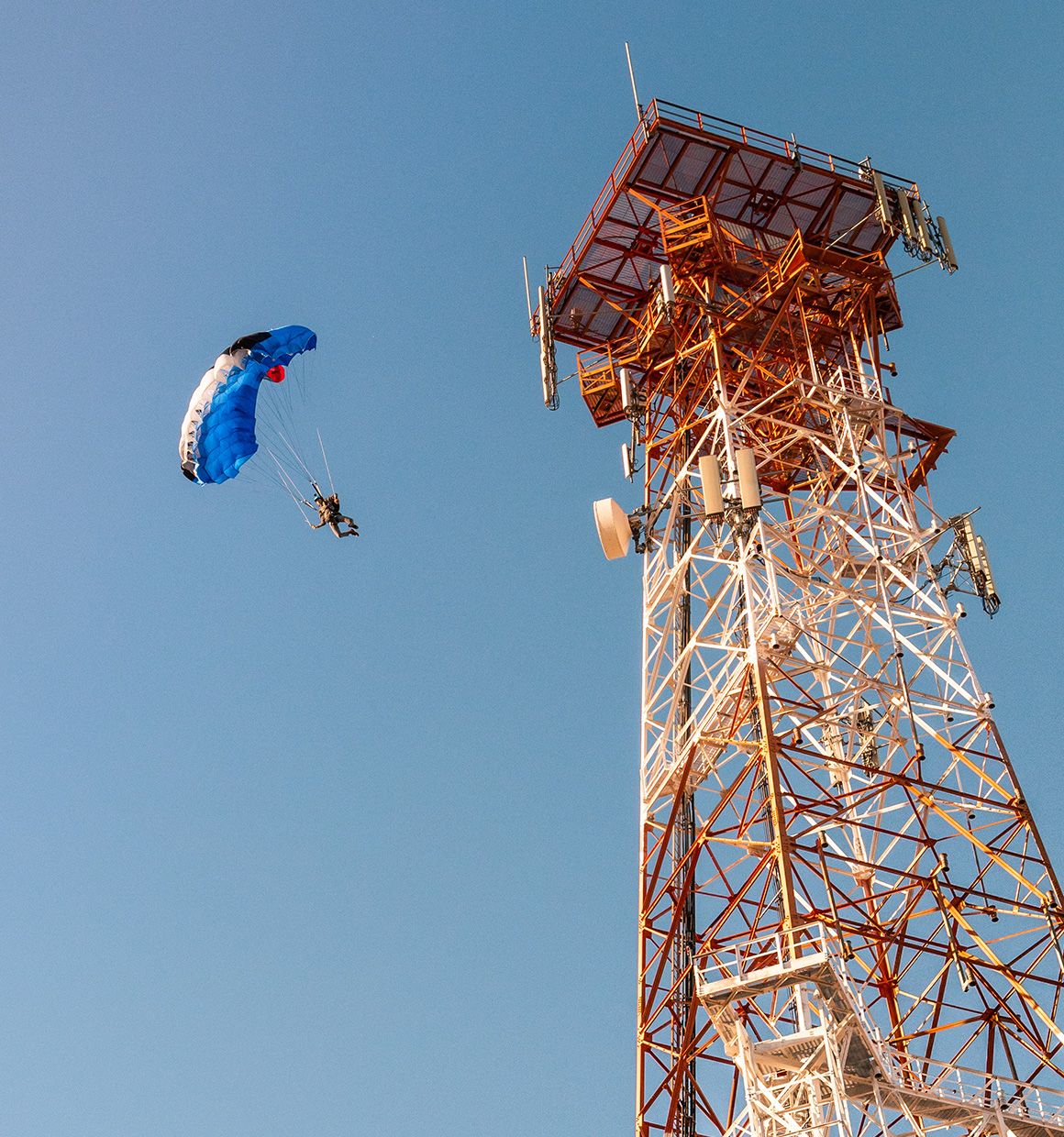
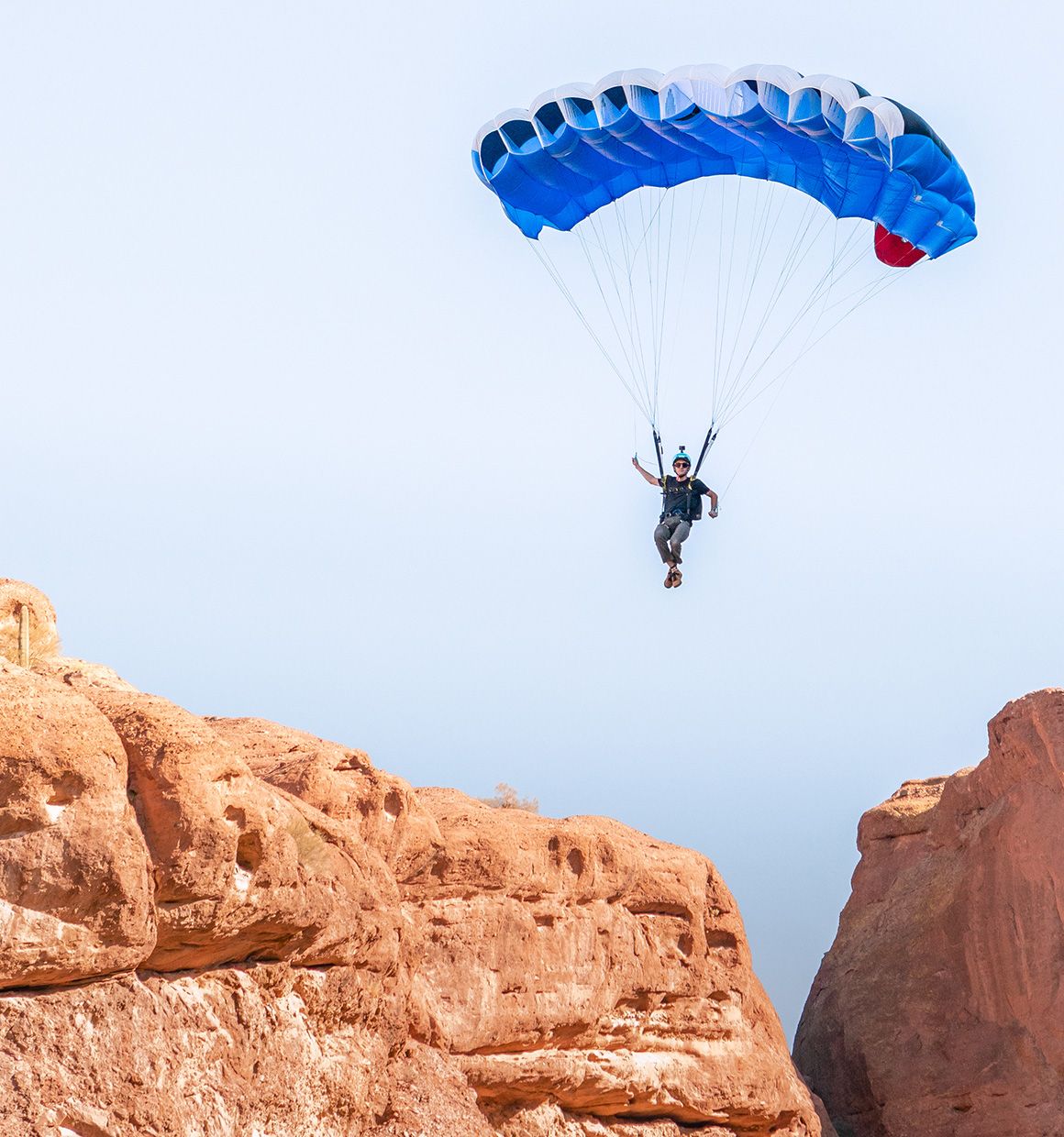
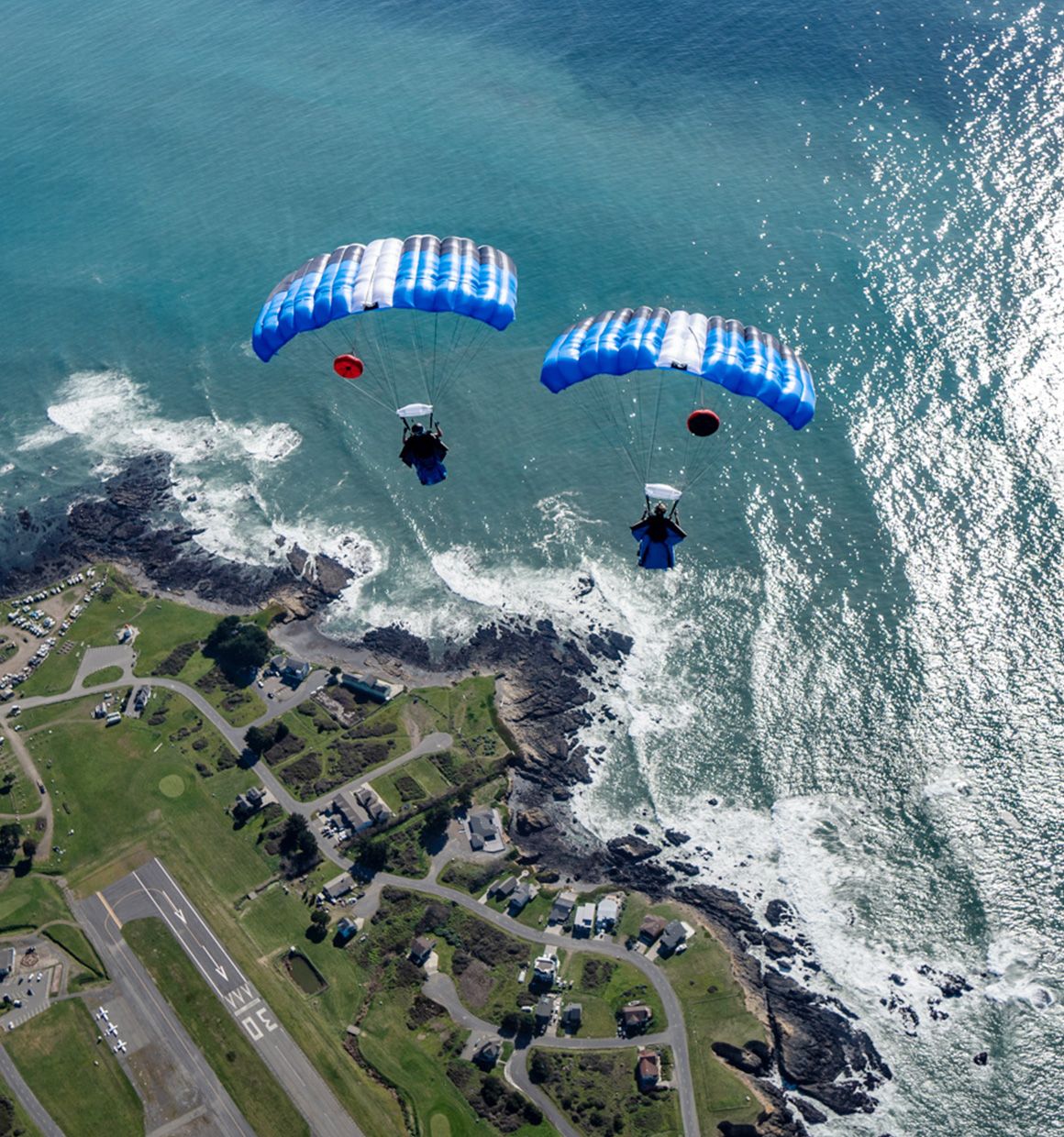
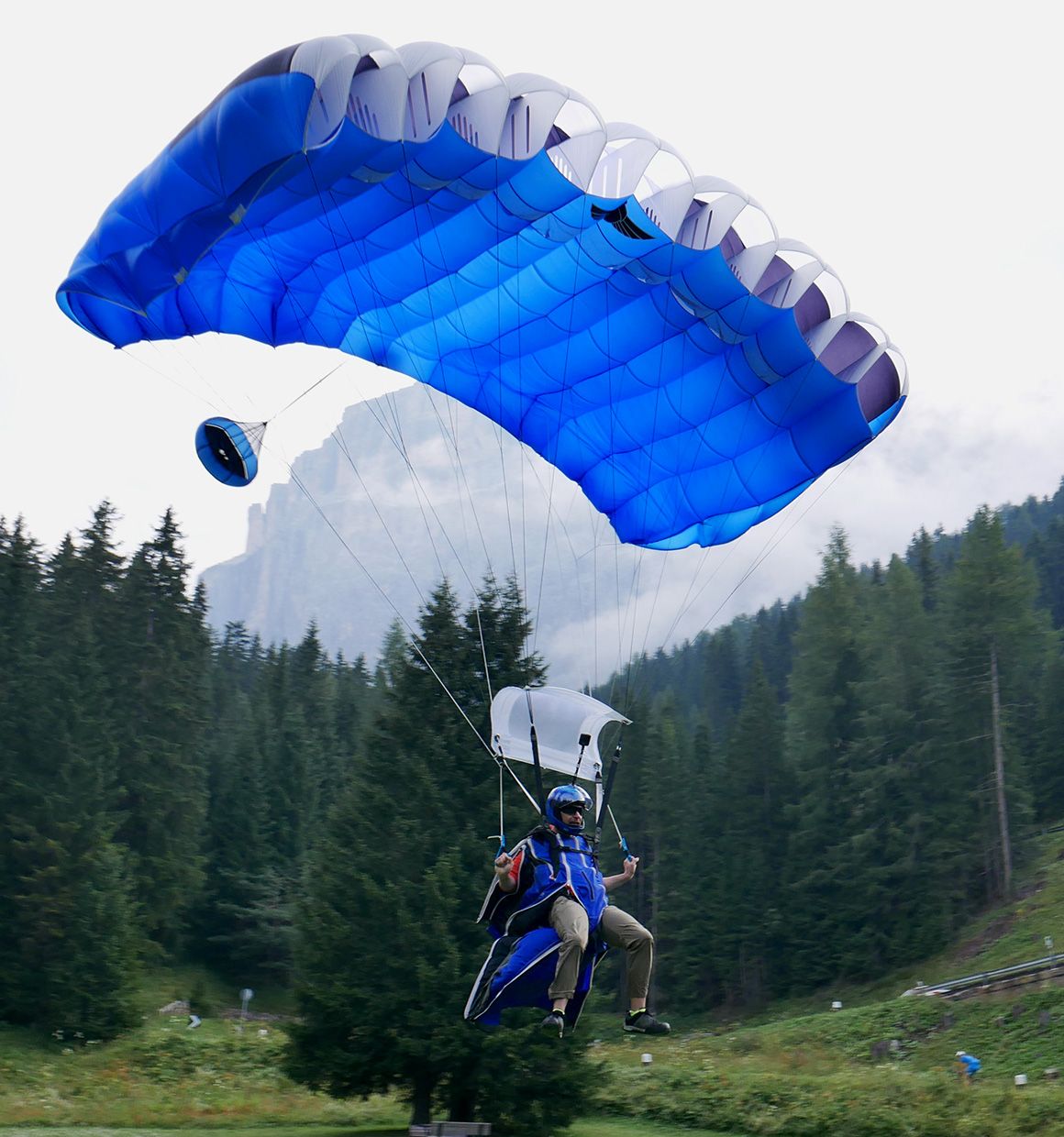
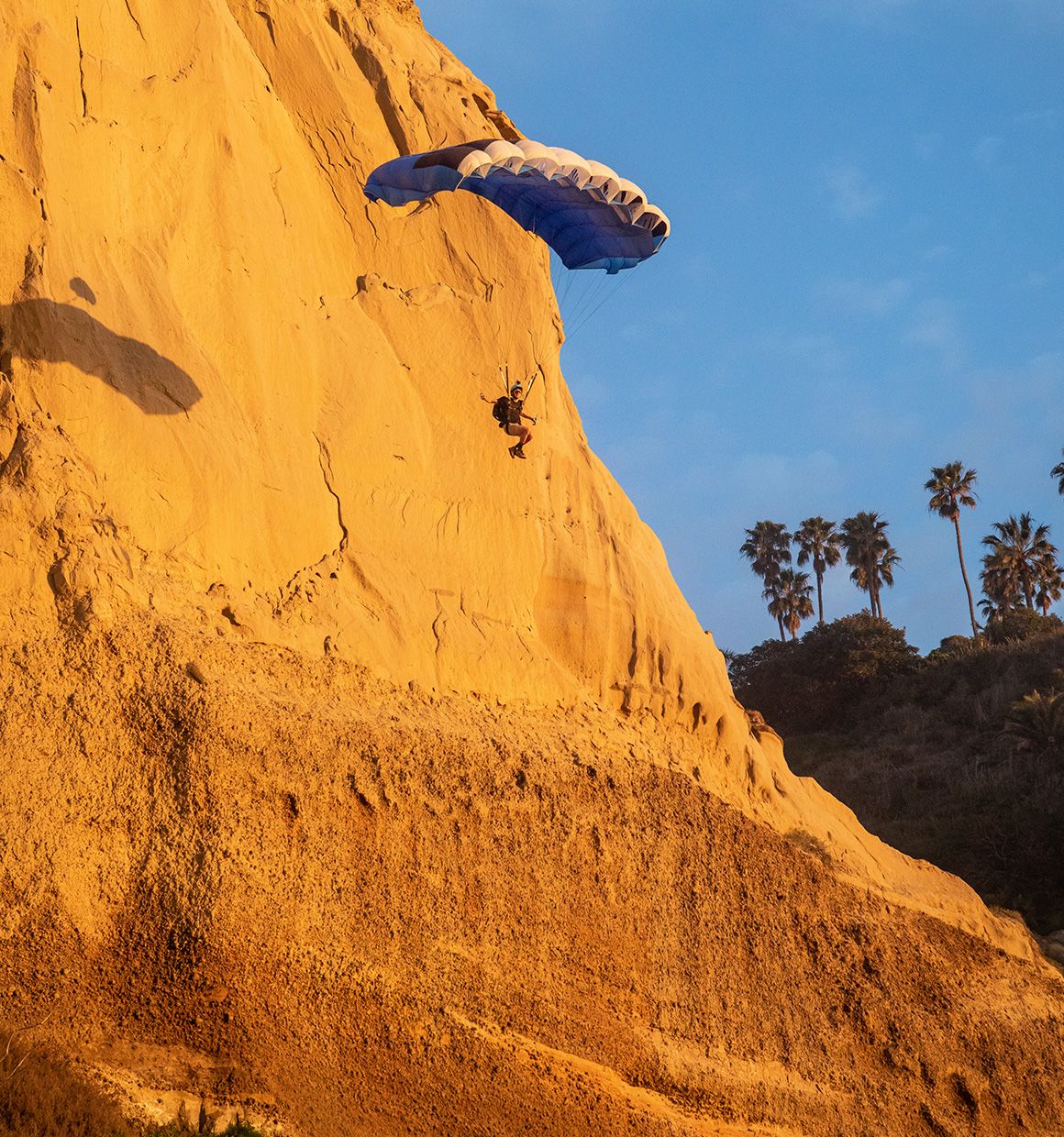
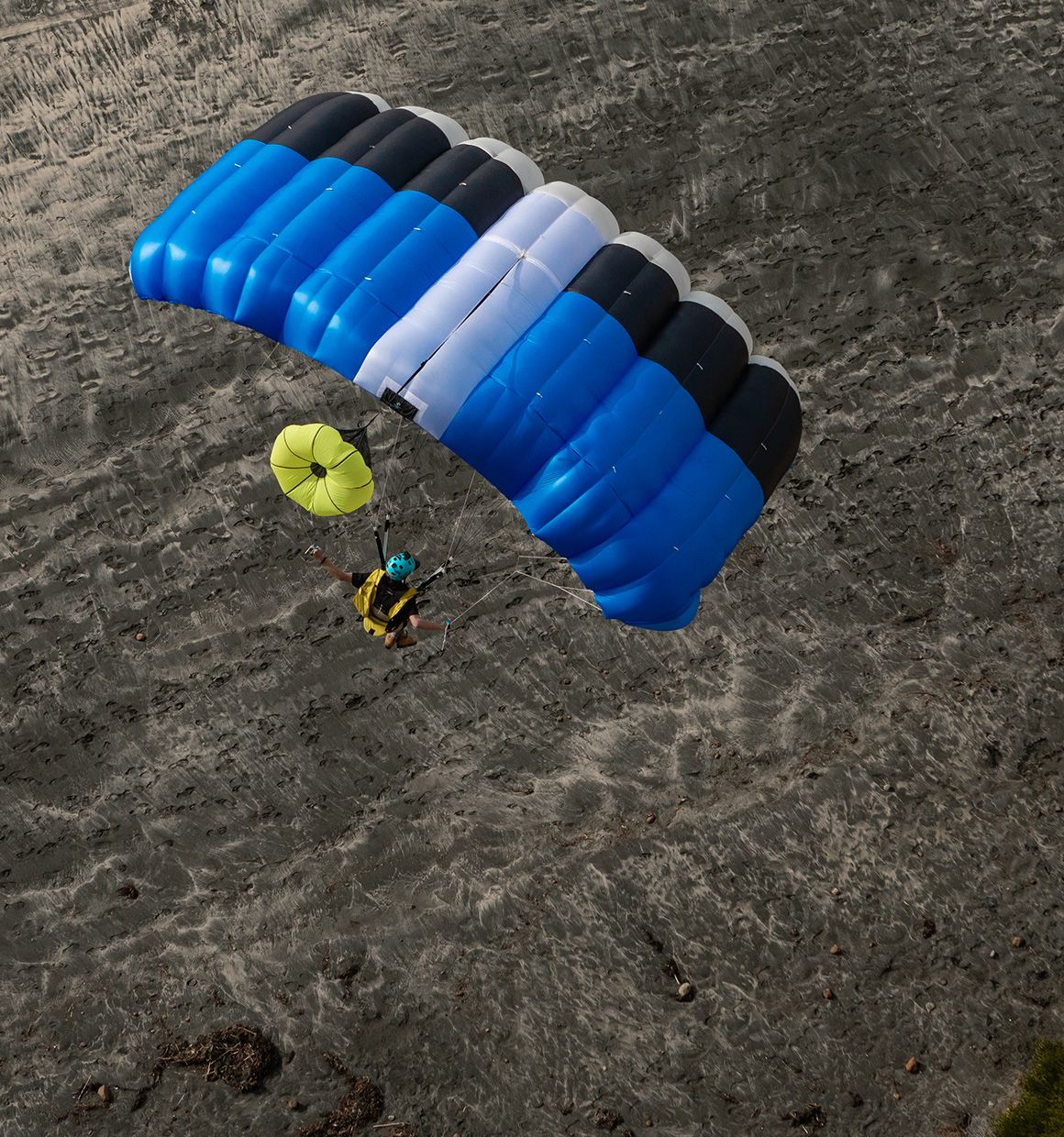
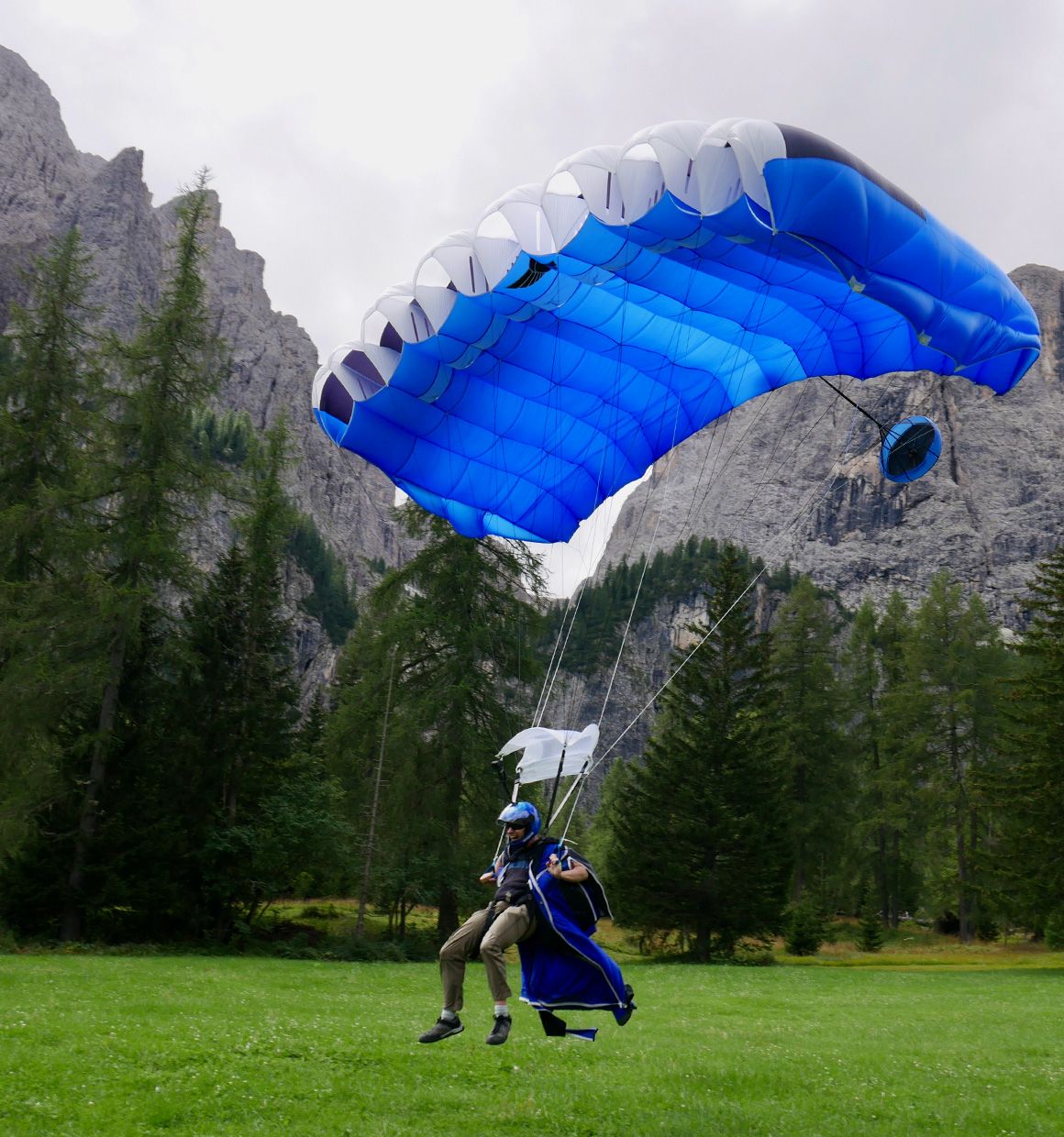
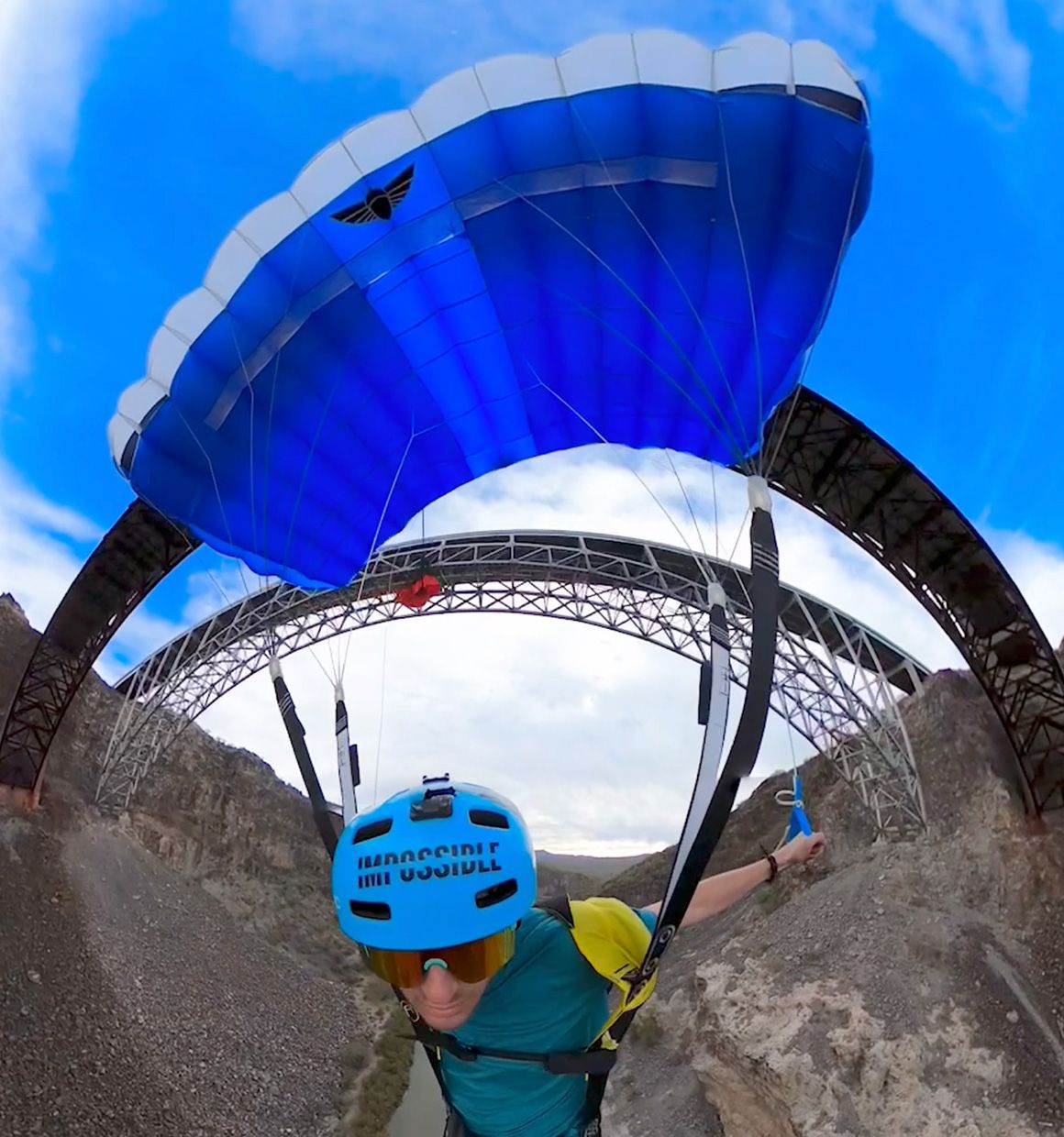
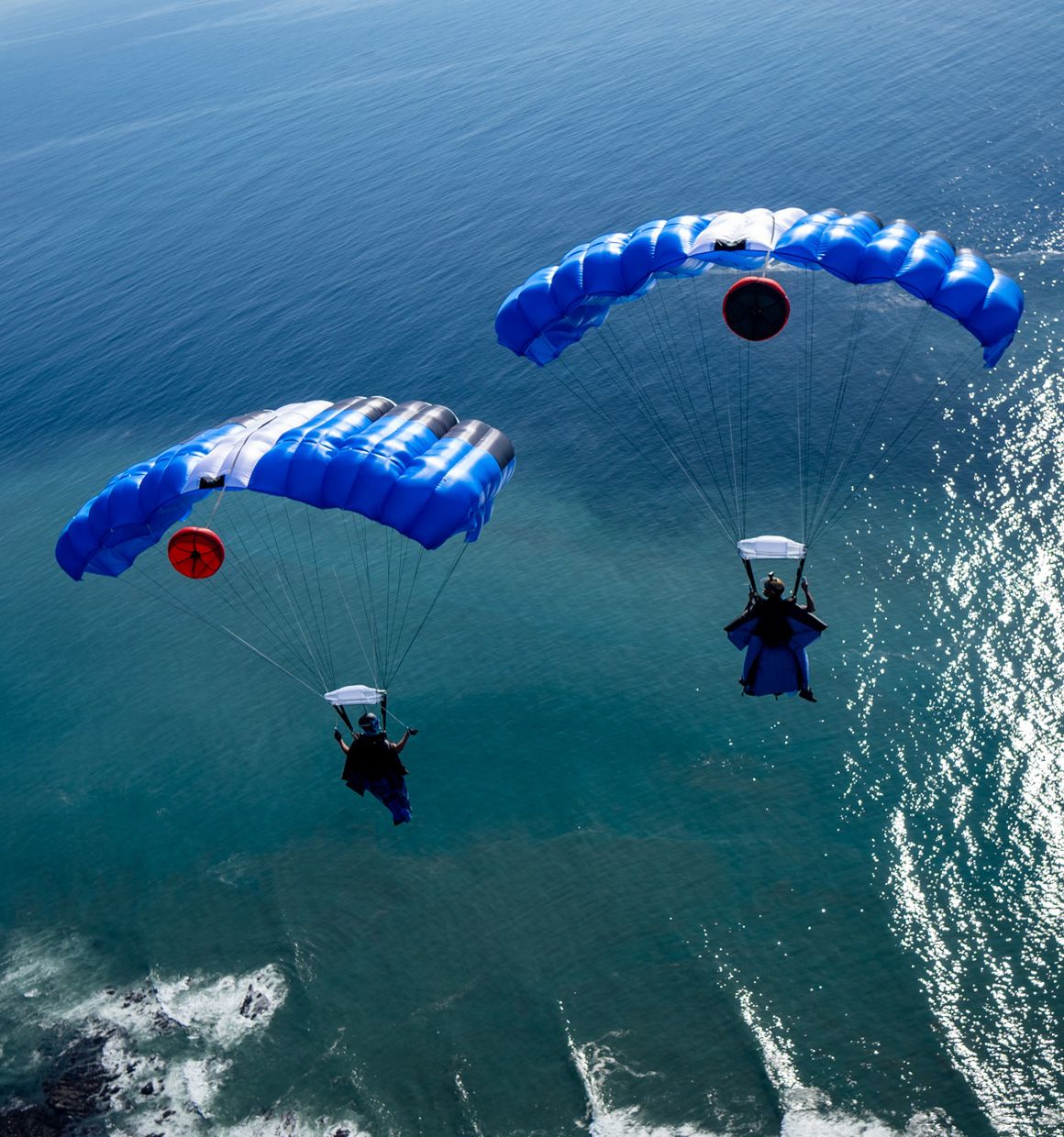
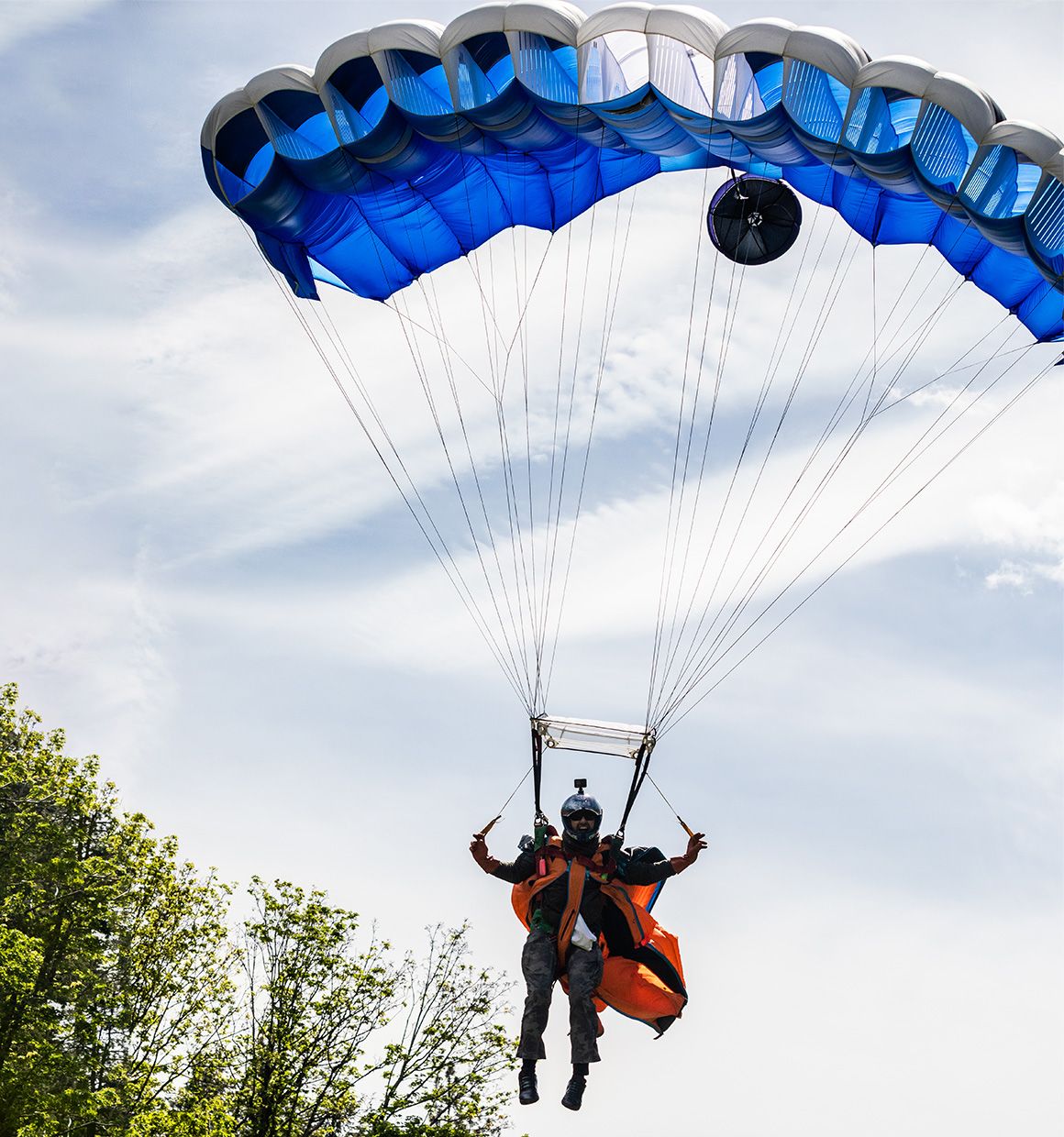
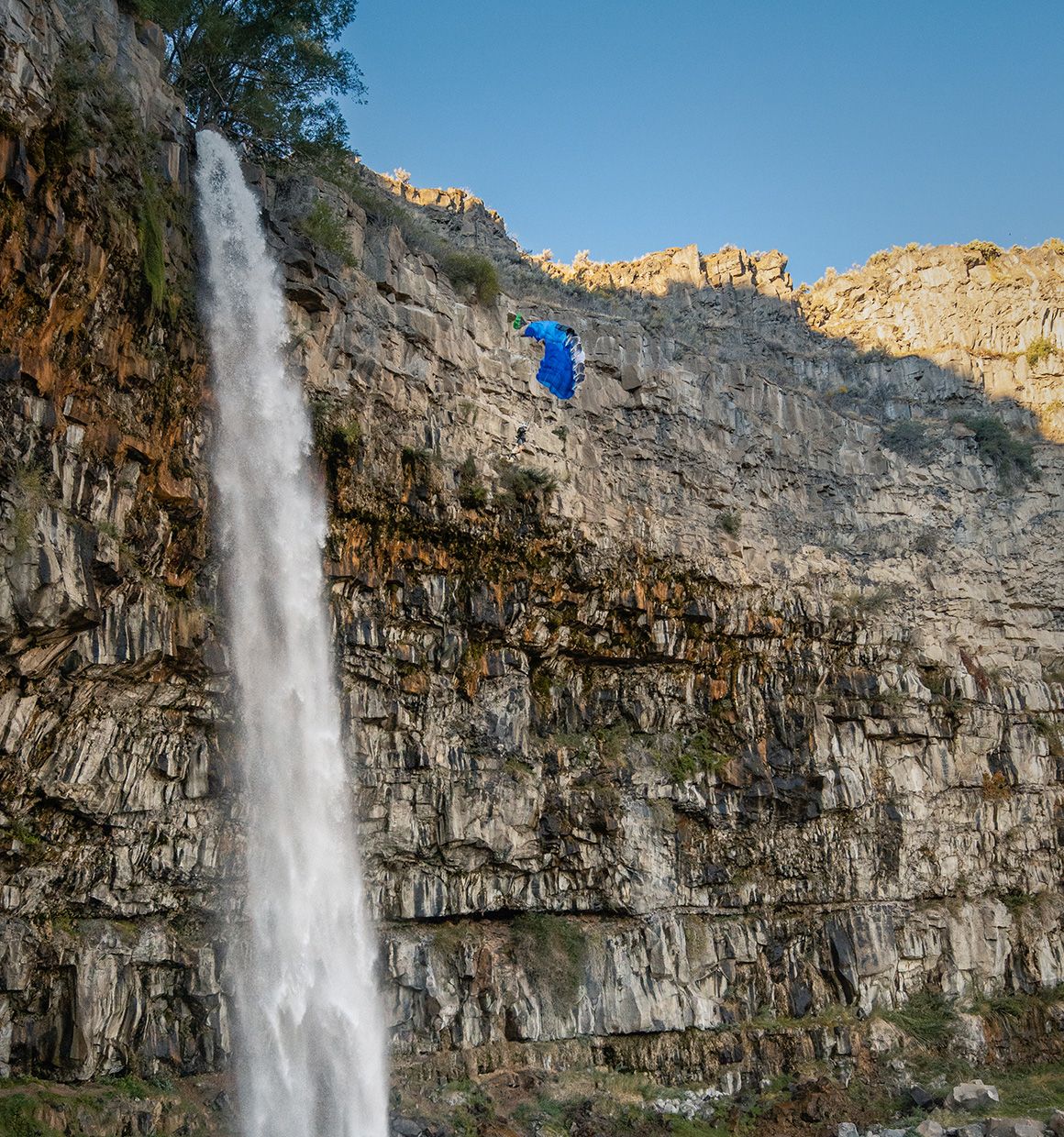
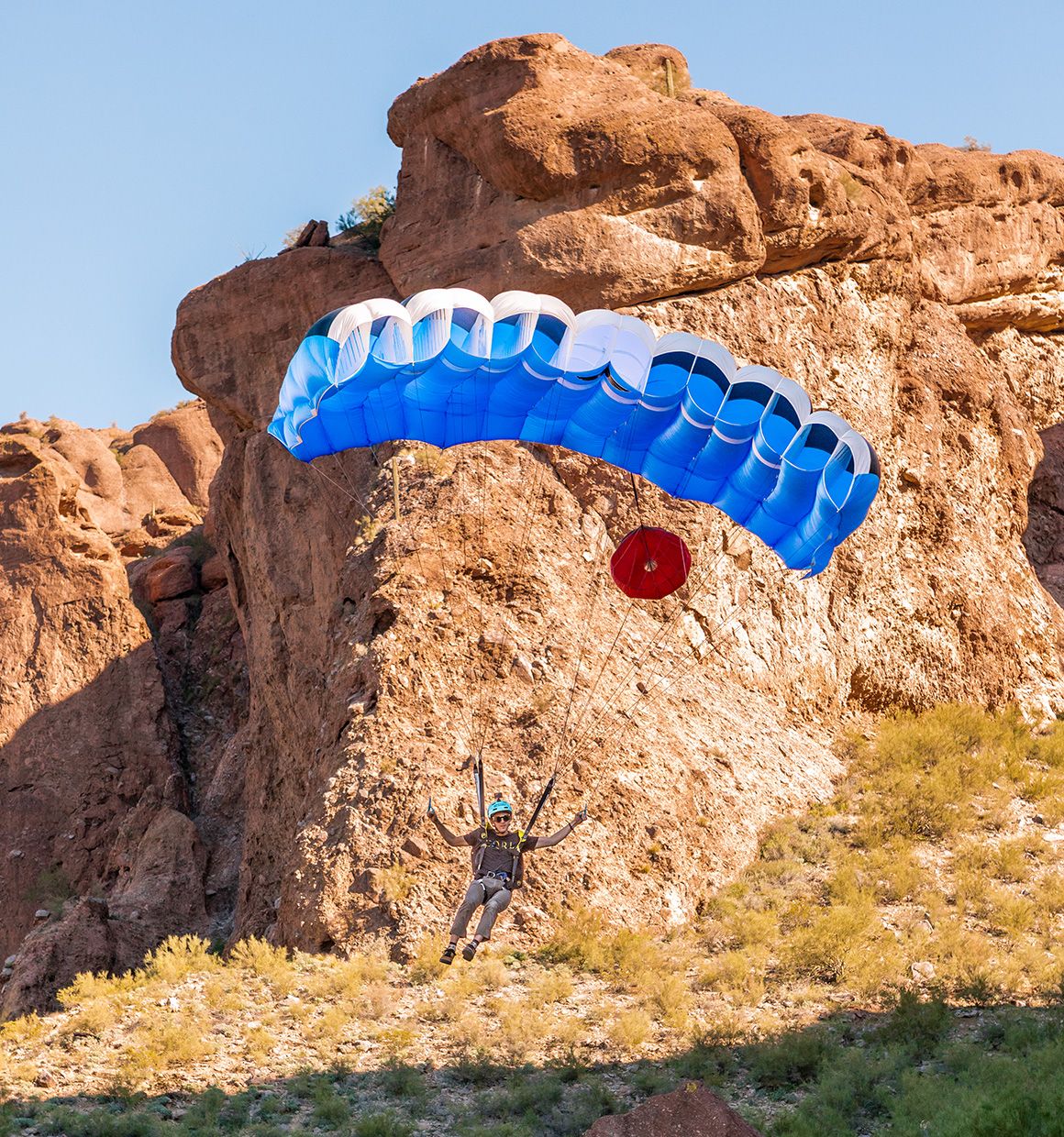
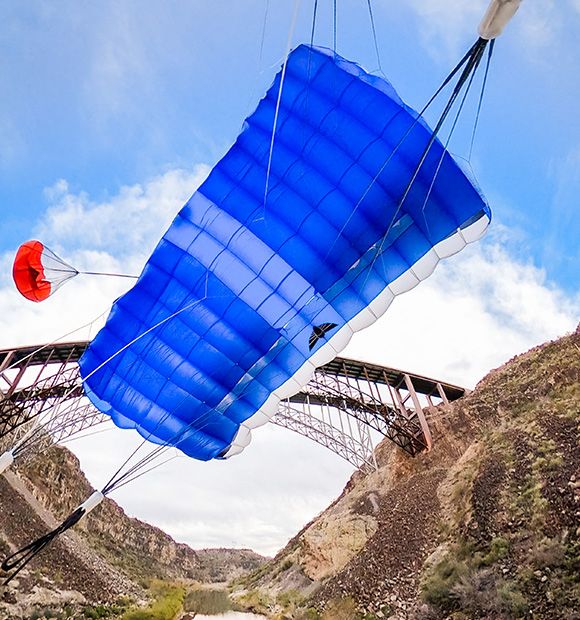
HAYDUKE 2 VIDEOS
HD1 VIDEOS
Design updates for the HD2 were focused on improving reliability while retaining all of the glide performance, flare, and deep-brake behavior that makes the Hayduke 1 so popular, and so versatile, with a five year track record of excelling at everything from low-urban to alpine cliffs.
FLOAT FLAPS, SLATS, & AGILITY
Sink steep approaches into technical LZs with ease. Like the HD1, and as pioneered on the Outlaw, the HD2 features rear-chord Float Flaps for improved deep brake performance which make steep accuracy style approaches simple and easy. Center span Slats add low-speed range. The agile handling that makes the HD1 so fun to fly remains the same in the HD2.
EXPANDED CROSSPORTING
Improved spanwise ventilation means faster inflation for slider-off applications, allowing earlier canopy control after opening. The laser-cut, load-path-calculated crossports also reduce packing bulk & weight.
TRANSVERSAL SHAPING & ELLIPSED ZP NOSE
Taken from modern paraglider tech, new 3D shaping at the leading edge reduces wrinkling and cell-billow for improved glide performance with no downsides. The ellipsed ZP nose places more ZP where it's needed most, at the center span.
SIX GROMMET SLIDER
The six grommet slider is one of the most compelling advancements in BASE parachute design. Your Hayduke 2 comes with either a 6G or 4G (Traditional 4 Grommet) slider. HD2 sliders feature two sizes of removable sail material "slider-brake" which allows you to easily change from high-drag (slow slider) to low-drag (normal mesh slider) easily with no rigging. Video of the 6G slider in use.
Float Flaps
Inspired by a paraglider design, Float Flaps now have a 10 year track record of use on SQRL canopies. This key innovation makes low-speed flight easy and controllable, allowing controlled backwards flight & steep accuracy style approaches with precision.
Slat System
The Hayduke 2 slat system increases airflow over the top surface of the canopy at high angles of attack (slow speed flight), spanning the three center cells. Combined with the the Float-Flap system, a large portion of the top surface is fed with laminar flow at high AoA (when deep brakes are applied).
Expanded Crossporting
Laser-cut crossports improve inflation for low freefall and slider-off applications, allowing earlier canopy control after opening. Additionally, pack volume and canopy weight are reduced.
Transversal Shaping
Paraglider technology, applied: 3D shaping is introduced to the leading edge to reduce cell billow and wrinkling, via the spanwise seam.
LONGEVITY
Non-coated (permeable) cloth degrades more quickly, and the porosity increases. As porosity at the leading edge increases, all things suffer: Glide worsens, flare weakens, and openings change. It is a simple fact that a BASE canopy with a ZP LE performs better and lasts longer than one without.
FLARE
A majority of lift is created at the leading edge of the airfoil – it is the most critical part of the chord. As permeable cloth degrades, lift and performance degrade. ZP nose canopies, all other factors being equal, flare better over a longer lifespan.
GLIDE PERFORMANCE
Air that permeates the leading edge decreases the pressure difference right where, again, most of the lift is generated. Less lift = less glide.
OPENINGS
Any air that flows through the parachute does not aid in expansion or inflation. While permeable cloth is overall a benefit to opening characteristics, adding some ZP is a benefit to early span and chord expansion. In short, ZP nose canopies open faster
PACKING
You're a grown-up (sort of) and we believe in you. You can figure out how to pack a parachute that has a few centimeters of ZP on the leading edge. It takes most people about five packjobs to dial it in.
There are many benefits to light-weight canopies.
Checkout our Light Fabrics Article to learn more about the benefits.
REDUCED CANOPY INERTIA
During the extraction and expansion phase means better openings, better heading performance.
FASTER EXTRACTION
A lighter parachute can be extracted more efficiently and has an advantage over standard weight canopies in the first seconds of deployment.
PACKING
Much easier to pack!
EASIER TO CARRY
Everyone likes arriving at the exit point with a bit more energy.
PACK VOLUME
The lower pack volume of PN9 allows a slimmer, more aerodynamic container.
